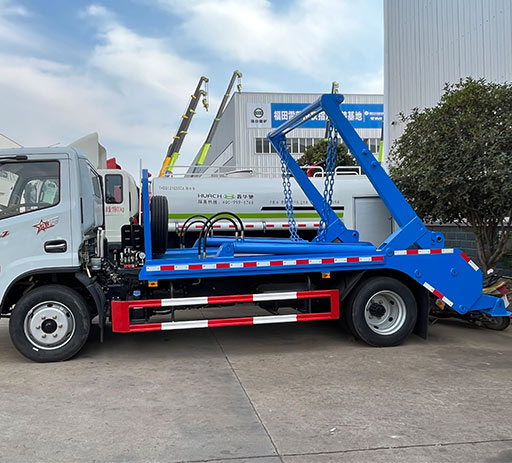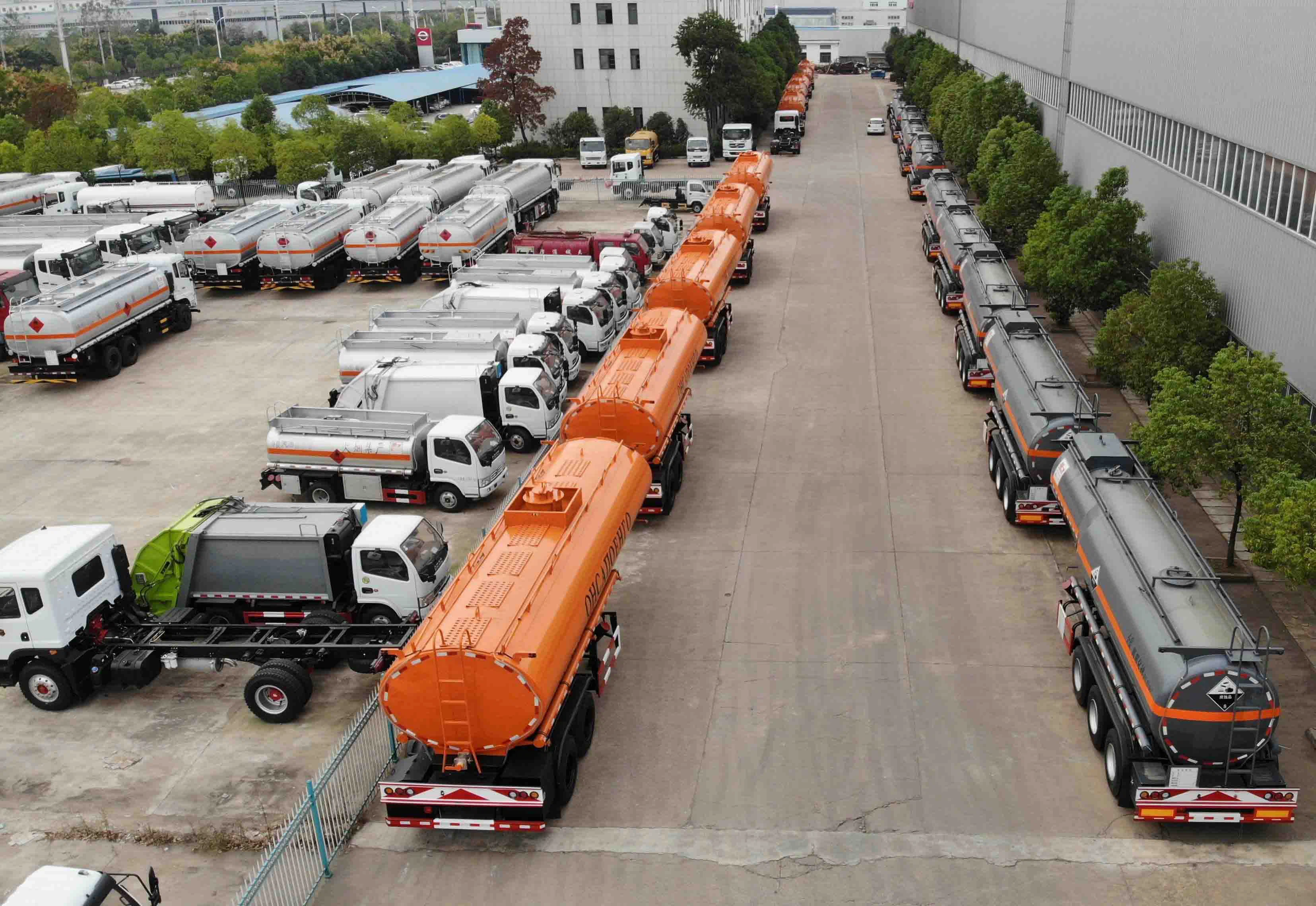Understanding Refrigerated Tankers: Essential Equipment for Cold Chain Logistics

When it comes to transporting temperature-sensitive goods, refrigerated tankers play a crucial role in maintaining product quality and safety. This comprehensive guide delves into the workings of refrigerated tankers, their types, benefits, applications, and more.
What is a Refrigerated Tanker?
A refrigerated tanker is a type of truck or vessel specifically designed to carry perishable goods at controlled temperatures. These tankers are equipped with insulation and refrigeration units that ensure products like food, pharmaceuticals, and chemicals are kept at ideal temperatures throughout the transportation process.
Importance of Refrigerated Tankers in the Supply Chain

Maintaining Product Quality
Refrigerated tankers are essential for preserving the quality of perishable goods. They prevent spoilage and decay by keeping products at constant low temperatures.
Compliance with Regulations
Many countries have strict regulations regarding the transportation of perishable goods. Refrigerated tankers help businesses comply with these regulations, avoiding legal issues and penalties.
Expanding Market Reach
With refrigerated tankers, companies can transport perishable goods over longer distances, reaching broader markets while ensuring product freshness.
Types of Refrigerated Tankers
1. Refrigerated Trucks
Refrigerated trucks are the most common type of refrigerated tankers. They are typically used for local and regional deliveries.
Specifications:
| Feature | Description |
|---|---|
| Temperature Range | -20°C to 0°C (or lower) |
| Capacity | 20 to 40 cubic meters |
| Insulation | Highly insulated panels |

2. Refrigerated Containers
Refrigerated containers, also known as reefer containers, are used for shipping perishable goods via sea routes. They can be operated by power sources during transit.
Specifications:
| Feature | Description |
|---|---|
| Temperature Range | -25°C to +25°C |
| Capacity | 10 to 40 tons |
| Power Source | Onboard generator or external power |
3. Refrigerated Rail Cars
Refrigerated rail cars are primarily used for transporting large quantities of perishables over long distances. They are equipped with a refrigeration unit and have several compartments for different products.
How Refrigerated Tankers Work
Key Components
Refrigerated tankers consist of several key components that work together to maintain the desired temperature:
1. Insulated Tank
The tank is insulated to minimize heat exchange with the external environment.
2. Refrigeration Unit
The refrigeration system circulates a refrigerant to cool the air or the product directly, maintaining the desired temperature.
3. Temperature Monitoring Systems
Modern refrigerated tankers are equipped with monitoring systems that allow for real-time tracking of the temperature. This enhances accountability and safety.
Applications of Refrigerated Tankers
1. Food Transportation
Refrigerated tankers are widely used in the food industry to transport products such as fruits, vegetables, dairy, meat, and seafood. Maintaining the right temperature ensures that these products remain fresh and safe for consumption.
2. Pharmaceutical Delivery
Many medications and vaccines require specific temperature controls during transportation. Refrigerated tankers ensure these products are delivered effectively while meeting safety guidelines.
3. Chemical Transport
Certain chemicals and hazardous materials necessitate temperature regulation during transportation. Refrigerated tankers help in the secure and safe transport of these substances.

Choosing the Right Refrigerated Tanker
Consider Your Cargo
Start by identifying the specific needs of your cargo, including required temperature range, type of product, and volume. This will guide you in selecting the right type of refrigerated tanker.
Evaluate Temperature Control Features
Look for tankers equipped with reliable temperature monitoring systems and backup refrigeration units to ensure constant temperature control during transit.
Investigate Transport Routes
Consider the transportation routes and logistics involved in your supply chain. Choose tankers that fit within your operational requirements and geographic coverage.
Best Practices for Operating Refrigerated Tankers
1. Proper Loading Techniques
To maintain the efficiency of refrigerated tankers, use proper loading techniques, including avoiding overloading and ensuring proper air circulation within the cargo area.
2. Regular Maintenance
Conduct regular maintenance checks on the refrigeration units and the tank’s integrity to prevent breakdowns and ensure optimal performance.
3. Train Personnel
Provide adequate training for drivers and handlers on how to operate refrigerated tankers and manage temperature-sensitive cargo effectively.
Future of Refrigerated Tankers
Technological Advancements
The refrigerated transport industry is consistently evolving. Technologies such as IoT and AI will play significant roles in enhancing monitoring systems, predictive maintenance, and energy efficiency in refrigerated tankers.
Sustainability Initiatives
As the demand for eco-friendly practices increases, future refrigerated tankers are expected to incorporate sustainable technologies, including energy-efficient refrigeration systems and alternative fuels.
Frequently Asked Questions (FAQs)
1. What is the ideal temperature for refrigerated tankers?
The ideal temperature for refrigerated tankers varies by product but generally ranges from -25°C to +25°C, depending on the type of goods being transported.
2. How can I ensure the quality of my cargo during transport?
Regular monitoring of temperature and humidity levels along with adhering to proper loading techniques will help maintain the quality of your cargo.
3. What regulations apply to refrigerated transport?
Regulations vary by country, but most require strict compliance with temperature control for specific perishable goods. Always consult local laws for compliance.
4. How does a refrigerated tanker differ from a standard tanker?
Refrigerated tankers feature specialized insulation and refrigeration systems designed to maintain temperature, whereas standard tankers are not equipped for temperature-sensitive cargo.
5. What maintenance is required for refrigerated tankers?
Regular checks of the refrigeration unit, insulation integrity, and temperature monitoring equipment are essential for the effective operation of refrigerated tankers.
6. Can refrigerated tankers be used for long-distance transport?
Yes, refrigerated tankers are often used for long-distance transport to ensure that temperature-sensitive products remain safe and compliant throughout the journey.
